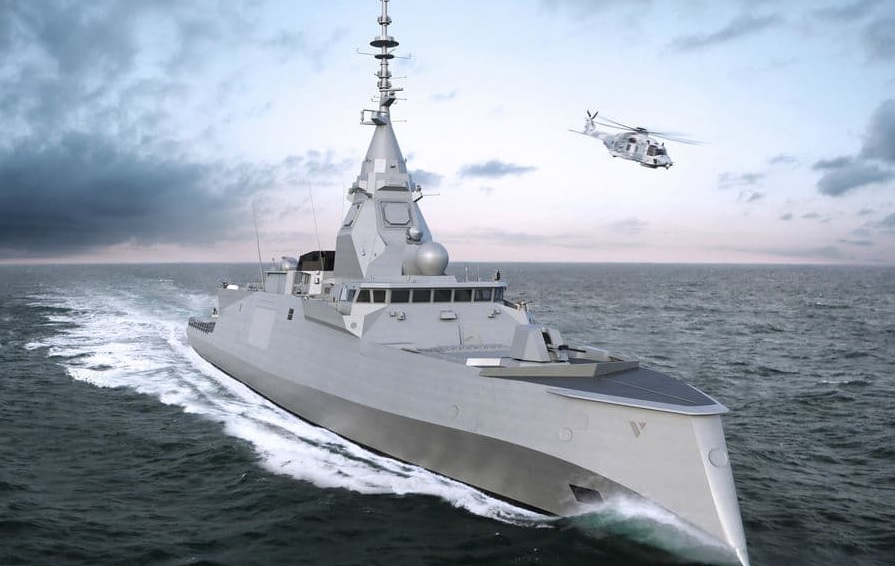Greece’s First FDI Frigate Kimon Marks a New Era in Naval Power

Greece is on the brink of a significant naval transformation with the upcoming addition of its first FDI (Frégates de Défense et d'Intervention) frigate, Kimon (F601). As Greece's first modern surface combatant in nearly three decades, this state-of-the-art vessel is set to redefine the country’s naval capabilities. This addition comes after the aging Hydra-class frigates (MEKO 200HN) have served Greece since the early 1990s. The Kimon, under construction at Naval Group’s shipyard in Lorient, France, is nearing completion, with the first sea trials scheduled just days before its French counterpart, the Amiral Ronarc'h.
The Hellenic Navy, alongside the Greek government, sees this acquisition as a monumental step forward in naval modernization. Greek Defense Minister Nikos Dendias recently announced the country’s intention to purchase a fourth FDI frigate, showing confidence in the capabilities of the program. The FDI frigates, including the Kimon, are set to be among the most sophisticated and powerful surface combatants globally. These vessels blend the best of modern naval technologies on a compact, stealthy platform, capable of addressing a wide range of maritime threats.
One of the most notable features of the Kimon is its sleek, modern design, which emphasizes stealth capabilities. Its inverted bow, integrated Panoramic Sensors and Intelligence Module (PSIM), and a distinctive shield behind the funnel—added to protect the SATCOM antenna and prevent interference from the exhaust—set it apart visually. This ship is designed with a focus on reducing its radar and infrared signature, crucial for stealth operations in modern naval warfare.
The Kimon frigate boasts impressive firepower and cutting-edge technology. It will be equipped with multiple missile systems, including eight anti-ship missiles, the ASTER 30 Block 1 surface-to-air missiles, and provisions for the future integration of the Missile de Croisière Naval (MdCN), also known as SCALP NAVAL cruise missiles. These cruise missiles, which have a range of over 1,000 kilometers, can deliver strategic strikes, giving Greece the capability to project power far beyond its immediate region. However, the integration of MdCN requires modifications to the SYLVER A70 Vertical Launch System (VLS), which may incur additional costs and changes to the existing armament configuration.
The frigate also incorporates advanced electronic warfare systems, such as the SAAB NLWS (L-ESM) system and the ALTESSE-H C-ESM & COMINT suite, which enhance its ability to detect, intercept, and counter electronic threats. Its SEAFIRE multi-function radar from Thales, with AESA (Active Electronically Scanned Array) technology, provides comprehensive coverage of air and surface threats, making it one of the most advanced radars of its kind. In addition, the PASEO XLR optronic systems from Safran offer long-range surveillance and targeting capabilities, allowing the ship to engage enemy vessels with precision.
A key component of the Kimon's versatility is its aviation capabilities. The frigate has a dedicated helicopter hangar and helipad designed to accommodate both manned helicopters like the MH-60R and unmanned aerial systems (UAS). The inclusion of Schiebel CAMCOPTER S-100 UAVs means that the ship can conduct surveillance, reconnaissance, and even light attack missions without having to deploy its helicopter. The hangar is designed with two separate doors, allowing for independent operations of both the helicopter and UAVs, which increases operational flexibility.
Inside the frigate, the Command Information Center (CIC) is designed to handle modern asymmetric warfare, featuring surveillance systems that include infrared and TV sensors. Operators can use these systems to control weapon stations like the LIONFISH 20 from Leonardo, providing inner-layer defense. The extensive automation and high degree of digitalization throughout the ship make the FDI HN frigate an incredibly efficient platform, capable of handling complex missions with a smaller crew.
While the Kimon is expected to enter service by 2025, Greece has ambitious plans for its entire FDI fleet. The second and third frigates, Nearchos and Formion, will follow, with the latter expected to enter service in its full "Standard 2" configuration by 2026. This configuration includes additional systems like the 21-tube RAM CIWS for missile defense, and enhancements to the helicopter hangar roof to support heavier American systems. The future of the Greek fleet is not just about maintaining its regional superiority; it’s about becoming a versatile, modern naval force capable of projecting power on a global scale.
With the acquisition of the FDI frigates, Greece is poised to enter a new era of naval capability, strengthening its position in the Mediterranean and beyond. The Kimon is not just a frigate; it's a symbol of Greece's determination to modernize its naval forces and secure its maritime interests in a rapidly changing geopolitical landscape.


